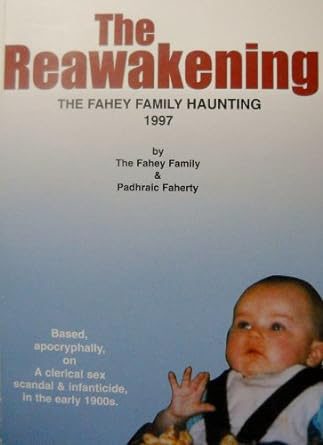The Hidden History of Psychic Espionage: Stargate, Grill Flame, and Centar Lane
Bizarre/Strange
Saturday 1st, February 2025
5 minute read.
The U.S. government’s exploration of psychic phenomena, known as the Stargate, Grill Flame, and Centar Lane programs, remains one of the most fascinating and controversial chapters in the history of covert operations. These programmes, which were initiated during the Cold War, delved into the realms of remote viewing and other paranormal abilities, with the aim of gaining an intelligence edge over adversaries.
Origins and Purpose
The story begins in the 1970s when the U.S. military, concerned about the potential for psychic espionage by the Soviet Union, began funding research into the use of psychic phenomena for intelligence purposes. The Stargate program, the most well-known of these initiatives, officially began in 1978 under the CIA’s jurisdiction. Its primary focus was on remote viewing-the ability to perceive distant or hidden objects, locations, or events without any direct sensory input.
The programme's official goal was to test the viability of remote viewing as a tool for military intelligence. At the time, the concept was considered far-fetched, but the U.S. government poured considerable resources into the research, hoping to uncover some secret edge in the ongoing Cold War.
“This was about seeing if we could find anything of value to help in the intelligence field,” explained Dr. Edwin May, one of the key researchers involved in the project. “We were tasked with looking at everything from enemy activity to military installations”.
In addition to Stargate, the Grill Flame and Centar Lane programmes played pivotal roles in this psychic espionage effort. Grill Flame was the codename for an earlier CIA programme that also focused on remote viewing. Centar Lane, on the other hand, referred to another branch of research into psychic abilities that was part of the broader U.S. government initiative to explore unconventional intelligence-gathering techniques.
The Research and Operations
Over the course of two decades, these classified projects saw a number of psychics trained to conduct remote viewing operations. They were tasked with gathering intelligence on everything from Soviet military facilities to high-level political meetings.
The Stargate programme itself went through several stages, with one of its most notable successes involving the use of remote viewers to describe objects and sites located thousands of kilometres away from the viewing subjects. According to declassified documents, the programme’s remote viewers were able to describe highly classified sites in the Soviet Union with a surprising degree of accuracy.
In one of the most famous instances, a remote viewer was able to describe a Soviet military installation in Russia located nearly 1,600 kilometres from their position. The description was so accurate that it led to further investigation and corroboration by traditional intelligence sources.
This was just one example of the programme's many operations, which spanned a variety of subjects and areas of interest. Remote viewers also participated in locating missing persons and identifying hidden objects, although the programme’s overall success rate has been the subject of significant debate.
“The results were hit or miss”, said Dr. Russell Targ, a physicist who worked closely with the programme. “But when the hits happened, they were extraordinary”.
Controversy and Declassification
Despite the programme's claim to fame in some circles, it was far from universally accepted. Many within the intelligence community remained sceptical of the effectiveness of psychic phenomena. Critics have long argued that the results were inconclusive at best, and that any apparent successes could have been attributed to coincidence or bias rather than genuine psychic ability.
The CIA eventually concluded that the programme’s results were insufficient to justify continued funding. In 1995, after years of investigation and evaluation, the government decided to shut down Stargate and its related projects. A final report from the CIA concluded that the programme had “not demonstrated significant value in the field of intelligence gathering,” and that the cost of further research outweighed any potential benefit.
However, the programme's declassification in 1995 raised new questions. The documents revealed that, while the U.S. government may have abandoned the project officially, many still believed there was merit to the research.
Legacy and Continued Interest
In the years since the programme's closure, Stargate, Grill Flame, and Centar Lane have continued to fuel intrigue. The release of government files has spurred countless documentaries, books, and articles, each attempting to decipher the truth behind these mysterious efforts.
“The public is fascinated by the idea of secret psychic experiments”, said Dr. John Alexander, a retired army officer who was involved in the programme. “The question of whether there is a real phenomenon to be explored continues to divide people to this day”.
In the UK and around the world, interest in the programmes remains high, with many wondering whether such operations are still ongoing, albeit under a new guise. While the U.S. government officially abandoned remote viewing research, there are still those who believe that the techniques explored in Stargate, Grill Flame, and Centar Lane may one day prove to have practical applications.
Some individuals remain committed to the belief that there are psychic powers that can be harnessed for the purposes of intelligence, but the official stance remains one of cautious scepticism. And though these programmes were ultimately deemed unsuccessful in their aims, their legacy lives on as a symbol of the curiosity, ambition, and mystery that characterised the Cold War era.
With the continued rise of interest in the paranormal, one can only speculate whether government agencies are still exploring such fringe areas, or if we have truly seen the end of psychic espionage.
The Enduring Questions
Were Stargate, Grill Flame, and Centar Lane legitimate research efforts, or were they simply elaborate experiments based on wishful thinking? While the answers may remain elusive, the fascinating tales of these secret government projects continue to inspire curiosity and debate in equal measure.
Origins and Purpose
The story begins in the 1970s when the U.S. military, concerned about the potential for psychic espionage by the Soviet Union, began funding research into the use of psychic phenomena for intelligence purposes. The Stargate program, the most well-known of these initiatives, officially began in 1978 under the CIA’s jurisdiction. Its primary focus was on remote viewing-the ability to perceive distant or hidden objects, locations, or events without any direct sensory input.
The programme's official goal was to test the viability of remote viewing as a tool for military intelligence. At the time, the concept was considered far-fetched, but the U.S. government poured considerable resources into the research, hoping to uncover some secret edge in the ongoing Cold War.
“This was about seeing if we could find anything of value to help in the intelligence field,” explained Dr. Edwin May, one of the key researchers involved in the project. “We were tasked with looking at everything from enemy activity to military installations”.
In addition to Stargate, the Grill Flame and Centar Lane programmes played pivotal roles in this psychic espionage effort. Grill Flame was the codename for an earlier CIA programme that also focused on remote viewing. Centar Lane, on the other hand, referred to another branch of research into psychic abilities that was part of the broader U.S. government initiative to explore unconventional intelligence-gathering techniques.
The Research and Operations
Over the course of two decades, these classified projects saw a number of psychics trained to conduct remote viewing operations. They were tasked with gathering intelligence on everything from Soviet military facilities to high-level political meetings.
The Stargate programme itself went through several stages, with one of its most notable successes involving the use of remote viewers to describe objects and sites located thousands of kilometres away from the viewing subjects. According to declassified documents, the programme’s remote viewers were able to describe highly classified sites in the Soviet Union with a surprising degree of accuracy.
In one of the most famous instances, a remote viewer was able to describe a Soviet military installation in Russia located nearly 1,600 kilometres from their position. The description was so accurate that it led to further investigation and corroboration by traditional intelligence sources.
This was just one example of the programme's many operations, which spanned a variety of subjects and areas of interest. Remote viewers also participated in locating missing persons and identifying hidden objects, although the programme’s overall success rate has been the subject of significant debate.
“The results were hit or miss”, said Dr. Russell Targ, a physicist who worked closely with the programme. “But when the hits happened, they were extraordinary”.
Controversy and Declassification
Despite the programme's claim to fame in some circles, it was far from universally accepted. Many within the intelligence community remained sceptical of the effectiveness of psychic phenomena. Critics have long argued that the results were inconclusive at best, and that any apparent successes could have been attributed to coincidence or bias rather than genuine psychic ability.
The CIA eventually concluded that the programme’s results were insufficient to justify continued funding. In 1995, after years of investigation and evaluation, the government decided to shut down Stargate and its related projects. A final report from the CIA concluded that the programme had “not demonstrated significant value in the field of intelligence gathering,” and that the cost of further research outweighed any potential benefit.
However, the programme's declassification in 1995 raised new questions. The documents revealed that, while the U.S. government may have abandoned the project officially, many still believed there was merit to the research.
Legacy and Continued Interest
In the years since the programme's closure, Stargate, Grill Flame, and Centar Lane have continued to fuel intrigue. The release of government files has spurred countless documentaries, books, and articles, each attempting to decipher the truth behind these mysterious efforts.
“The public is fascinated by the idea of secret psychic experiments”, said Dr. John Alexander, a retired army officer who was involved in the programme. “The question of whether there is a real phenomenon to be explored continues to divide people to this day”.
In the UK and around the world, interest in the programmes remains high, with many wondering whether such operations are still ongoing, albeit under a new guise. While the U.S. government officially abandoned remote viewing research, there are still those who believe that the techniques explored in Stargate, Grill Flame, and Centar Lane may one day prove to have practical applications.
Some individuals remain committed to the belief that there are psychic powers that can be harnessed for the purposes of intelligence, but the official stance remains one of cautious scepticism. And though these programmes were ultimately deemed unsuccessful in their aims, their legacy lives on as a symbol of the curiosity, ambition, and mystery that characterised the Cold War era.
With the continued rise of interest in the paranormal, one can only speculate whether government agencies are still exploring such fringe areas, or if we have truly seen the end of psychic espionage.
The Enduring Questions
Were Stargate, Grill Flame, and Centar Lane legitimate research efforts, or were they simply elaborate experiments based on wishful thinking? While the answers may remain elusive, the fascinating tales of these secret government projects continue to inspire curiosity and debate in equal measure.



